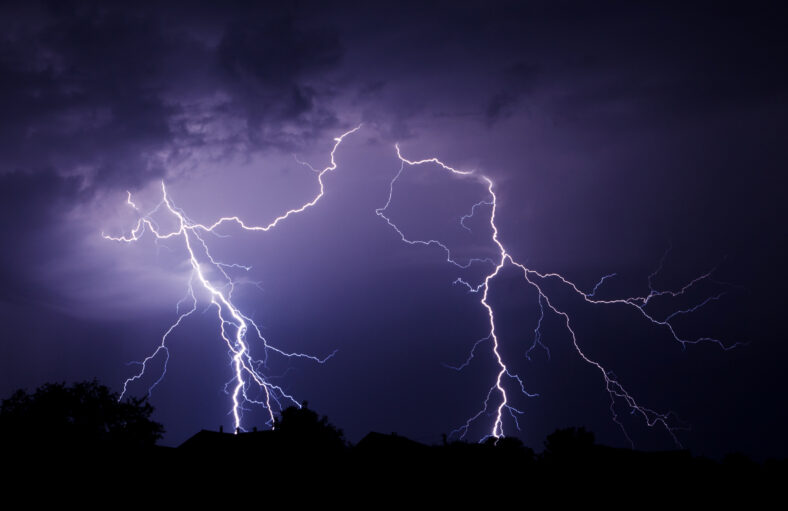These Tropical Trees Thrive After Being Struck By Lightning

For one tropical tree species in the forests of Panama, getting struck by lightning every once in a while is no big deal. In fact, the electrical zap can actually help it grow. The trees may have even evolved to attract lightning.
After noticing that almendro trees did not seem to be affected by lightning strikes, a team of researchers became interested in how the trees managed to survive something that would devastate any other living species.
A forest ecologist named Evan Gora from the Cary Institute of Ecosystem Studies led a team that tracked 93 trees that were struck by lightning at the Smithsonian Tropical Research Institute on Barro Colorado Island in Panama. They used lightning strike-locating instruments to determine which trees had been hit by bolts.
Between 2014 and 2019, the researchers assessed the trees’ condition, two to six years after the strike. Of all the trees they analyzed, nine of them were from the almendro species (Dipteryx oleifera). They appeared to be doing much better than the rest of the trees, having only lost small amounts of leaves.
Within just two years of being hit, 64 percent of the other trees died. In the meantime, the almendro trees were thriving.
The electricity killed their branches and leaves or traveled into the air into nearby trees, effectively clearing more space for them to grow.
The research team found that trees situated near a large almendro tree are 48 percent more likely to be killed by lightning than those living near another species.
The lightning strikes also reduced the number of lianas, or parasitic vines, on the almendros by 78 percent. Typically, these vines would grow on top of the almendro tree and steal sunlight from its leaves. But after lightning, they died back.
The almendro trees definitely would not live as long without the benefits from lightning, suggesting that the trees adapted to attract lightning.

Sign up for Chip Chick’s newsletter and get stories like this delivered to your inbox.
The trees can grow up to 165 feet in height. In addition, they have wide crowns that make them up to 68 percent more likely to be struck by lightning than similar trees.
Almendro trees are an important species in the tropical forests of South America. Their fruit and the almond-flavored seeds within them are a food source that supports more than 100 animal species during the region’s dry season.
Some of the electrical resistance of the trees might come from moisture in their wood. The trees move water efficiently, allowing the electricity to pass through without creating too much heat. The less heat there is, the less damage is sustained.
Overall, the discovery challenges the idea that lightning only causes destruction. It also provides benefits and leads to growth. The fresh findings can make major contributions to our understanding of plant evolution.
The details of the new study were published in the journal New Phytologist.
More About:News